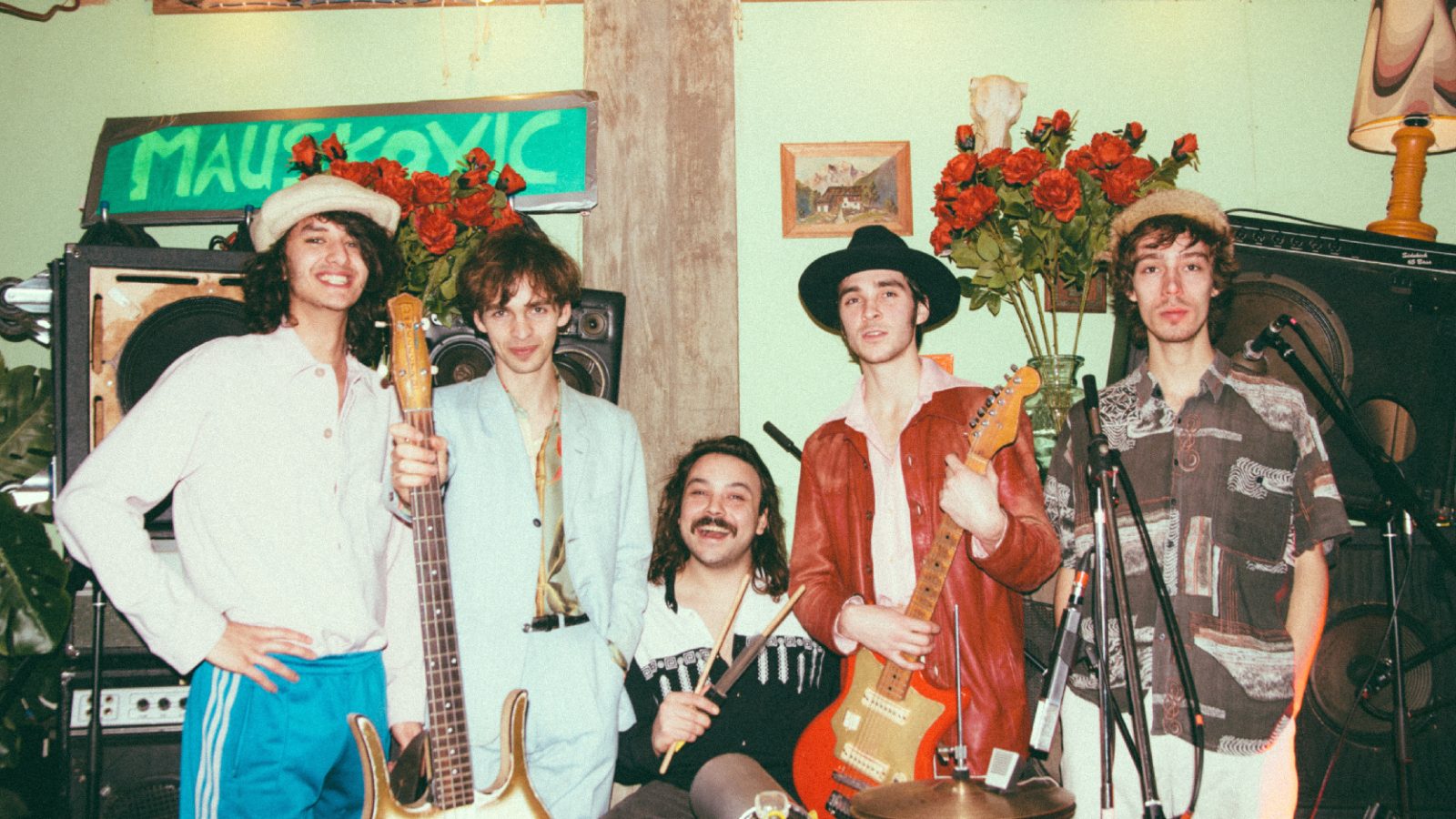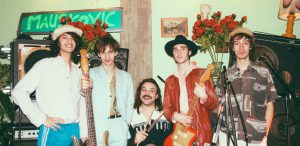
Inception to Mixdown: Nicola Mauskovic on The Mauskovic Dance Band’s ‘Dance Place Garage’
A love for Afro-Latin music pervades the sound of The Mauskovic Dance Band: a prolific, Netherlands-based five piece whose efforts have yielded two 7” singles, an EP and LP in just two years. Add to that their appreciation for disco, no-wave, drum machines and old-school music production, and an idea of their eclectic sound will surely begin to form in your mind. Their leader, Nicola Mauskovic, is chiefly responsible for their musical direction, and recently took the time to educate us on how an Afro-Colombian response to Afrobeat music formed a hybrid style that resonated deeply with him, during the creation of Dance Place Garage, from the eponymous debut album released earlier this year. We’re excited for the band to return to Manchester on 28th October for a show in the YES Basement, and recommend picking up tickets before diving into the creation of the track, below.
There appears to be a strong Afrobeat influence running through Dance Place Garage, with its guitar lick, hand percussion and keyboard sound. Is that the case, and were there any specific records that informed the direction of this track?
Nicola Mauskovic: ‘Yes that is right, but it’s mainly influenced by the Afro-Colombian style of groups like Wganda Kenya and Afrosound. They tried to copy Fela Kuti’s Afrobeat in the ‘70s and ‘80s, which became a crazy hybrid latin version of Afrobeat. Also, the drum groove is a traditional Cumbia rhythm which is a South-American style. So it’s mainly the Colombians that created the inspiration for this track.’
Do you remember how Dance Place Garage took shape: what idea did the track blossom from and how did you and the band begin to structure and arrange it?
NM: ‘It definitely started with the guitar riff, which the groove was build on. Then the vocals came. We really created it in the studio and never played it as a band yet before recording it.’
A lot of interesting gear seems to be in use in the track, including drum machines and synthesisers. Can you tell us a bit about the gear you had at your disposal in the studio, and having self-produced the track, how you decided which textures were best suited to the composition.
NM: ‘I really like to limit myself to the gear I have in hardware around me, while recording. For this album, it was a Roland TR-626 drum machine, which has all these silly latin percussion sounds. That is very cool. Some MPC1000 crunchy tom solos and a Mini Jupiter synth from Roland (a new reissue). I like the use of these ‘80s drum machines with the more organic percussion, this creates a cool mix of man and machine grooving.’
Did you try anything for the first time when rehearsing or recording this track – anything that made the process different from previous recording sessions?
NM: ‘I tried to give the drum machines more attention in the mix, compared to the older records. They really stand out as drum machines and are not buried in the layers of congas and timbales. Also, I used a bit more “housey” sounds like the claps from the machines, which gives a different vibe to the track and takes the ‘70s vibe away a bit. Also, I put the vocals more in front to give it a bit more energy.’
Yourself and Jacco Gardner mixed Dance Place Garage, as well as the rest of your eponymous debut LP. What was it like working with Jacco, and did you have any guidance for him with the mix, or a shared idea about how you wanted the finished track to sound?
NM: ‘Me and Jacco work a lot together on our other project, so it was very familiar to work together. I definitely had guidance for him for the mix because our taste is pretty different. Also, it was the first time we mixed it on an old Tascam desk (we bought together that week) to an 8-track tape machine. Jacco had never tried this before and it was kind of a test for his new studio in Lisbon.’







